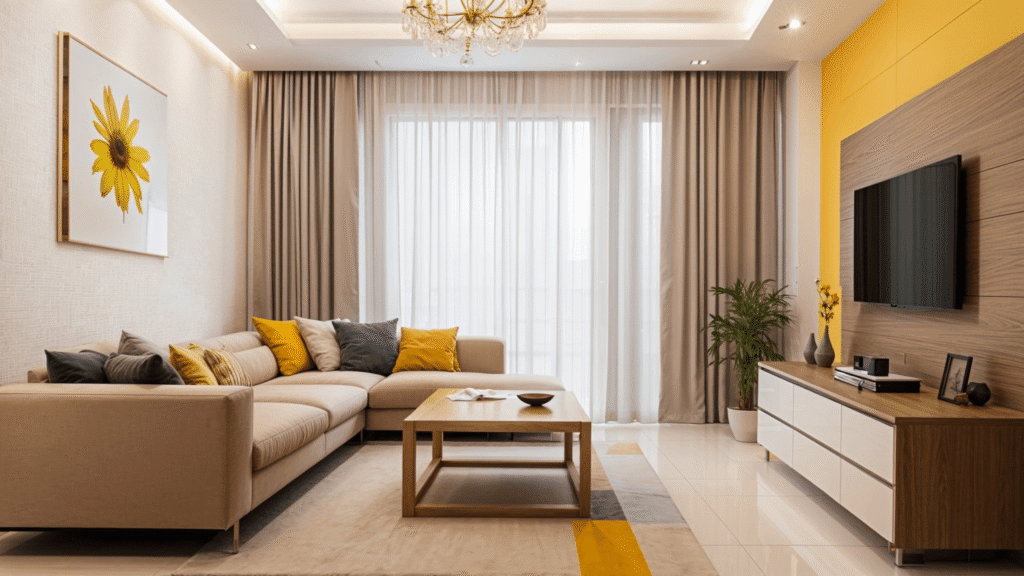
The living room is the heart of the home—a space where families gather, guests are entertained, and countless memories are made. As the most versatile and visible room in the house, its design plays a significant role in setting the overall tone of your home’s style. Whether you’re starting fresh or looking to update your current space, thoughtful living room design can balance functionality, comfort, and personality.
This article explores the key elements of successful living room design, popular styles, and practical tips to help you create a space that’s both inviting and beautiful.
Understanding the Purpose of Your Living Room
Before diving into furniture, colors, or décor, it’s important to define how your living room will be used. For some, it’s primarily a space for family movie nights and relaxation. For others, it may serve as a formal entertaining area. Clarifying your needs helps shape the design decisions, from furniture layout to lighting choices.
Ask yourself:
- Do you want a casual or formal atmosphere?
- Is the space used daily by children and pets?
- Will it double as a multi-purpose room for work or hobbies?
The answers provide a foundation for creating a design plan that suits your lifestyle.
Key Elements of Living Room Design
1. Layout and Space Planning
A functional layout is crucial. Start by arranging furniture around a focal point—this could be a fireplace, large window, or entertainment center. Ensure there’s enough room for movement, with clear pathways between seating areas and entry points.
Open-plan homes may require defining the living room space with rugs, furniture arrangements, or room dividers to create a sense of boundary.
2. Furniture Selection
The sofa is often the centerpiece of the living room, so choose one that balances comfort with durability. Complement it with accent chairs, a coffee table, and side tables. Scale is key—oversized furniture can overwhelm small rooms, while too-small pieces may feel lost in larger spaces.
Consider multi-functional furniture such as ottomans with storage or modular seating that can be rearranged for different occasions.
3. Color Palette
Color sets the mood of the room. Neutral tones like beige, gray, and white create a timeless backdrop, while bolder shades—navy, emerald, or mustard—add drama and personality. Accent walls, throw pillows, and rugs are great ways to introduce color without overwhelming the space.
4. Lighting
Layered lighting creates both functionality and ambiance. Combine overhead lighting with floor lamps, table lamps, and accent lighting. Dimmable options allow you to adjust brightness depending on the activity, whether it’s reading, entertaining, or relaxing.
5. Textiles and Accessories
Rugs, curtains, cushions, and throws add warmth and texture. Choose fabrics that complement the overall style of the room. For example, linen and cotton give a casual, airy feel, while velvet and silk bring luxury. Accessories like artwork, plants, and décor items personalize the space and reflect your taste.
6. Storage Solutions
A clutter-free living room feels more inviting. Incorporate shelves, cabinets, or built-in units to store books, electronics, and decorative items. Stylish baskets or trunks can provide additional storage while doubling as accent pieces.
Popular Living Room Design Styles
Modern Minimalist
Clean lines, neutral colors, and uncluttered spaces define this style. Furniture is functional yet sleek, with an emphasis on simplicity and open layouts.
Scandinavian
Characterized by light colors, natural wood, and cozy textiles, Scandinavian design creates a warm, inviting atmosphere. It’s ideal for those who prefer understated elegance.
Traditional
This style features classic furniture, rich colors, and decorative details like molding and ornate lighting fixtures. It’s perfect for creating a formal, timeless look.
Industrial
Inspired by lofts and warehouses, industrial design highlights raw materials like exposed brick, metal, and wood. Neutral tones and open spaces make it bold yet practical.
Bohemian
For a relaxed, eclectic vibe, Bohemian design layers vibrant colors, patterns, and textures. Rugs, cushions, and plants play a big role in creating a cozy, artistic environment.
Tips for Designing a Living Room That Works
- Balance Function and Style: Choose furniture and décor that look good but also meet the needs of your daily life.
- Scale and Proportion Matter: Match the size of furniture and accessories to the dimensions of the room.
- Mix Materials and Textures: Combine wood, metal, glass, and textiles for a layered, dynamic feel.
- Use Area Rugs: Rugs define seating zones and add comfort underfoot.
- Incorporate Nature: Plants not only beautify the room but also purify the air and create a calming effect.
- Personalize the Space: Display family photos, souvenirs, or artwork to make the room feel uniquely yours.
Common Living Room Design Mistakes to Avoid
- Overcrowding with Furniture: Less is often more. Leave space to move comfortably.
- Poor Lighting: Relying solely on overhead lights can make the room feel flat. Layer your lighting.
- Ignoring Scale: A massive sofa in a small room—or tiny artwork on a large wall—creates imbalance.
- Clashing Styles: While mixing can work, too many conflicting styles can make the room feel chaotic.
Conclusion
Designing the perfect living room is about more than just arranging furniture—it’s about creating a welcoming space that reflects your lifestyle and personality. By carefully considering layout, color, lighting, and décor, you can transform your living room into a place where comfort meets style.
Whether you prefer a modern minimalist aesthetic, cozy Scandinavian charm, or bold industrial vibes, the key is to design intentionally. With the right choices, your living room can truly become the centerpiece of your home—a space where family gathers, friends connect, and memories are made.
